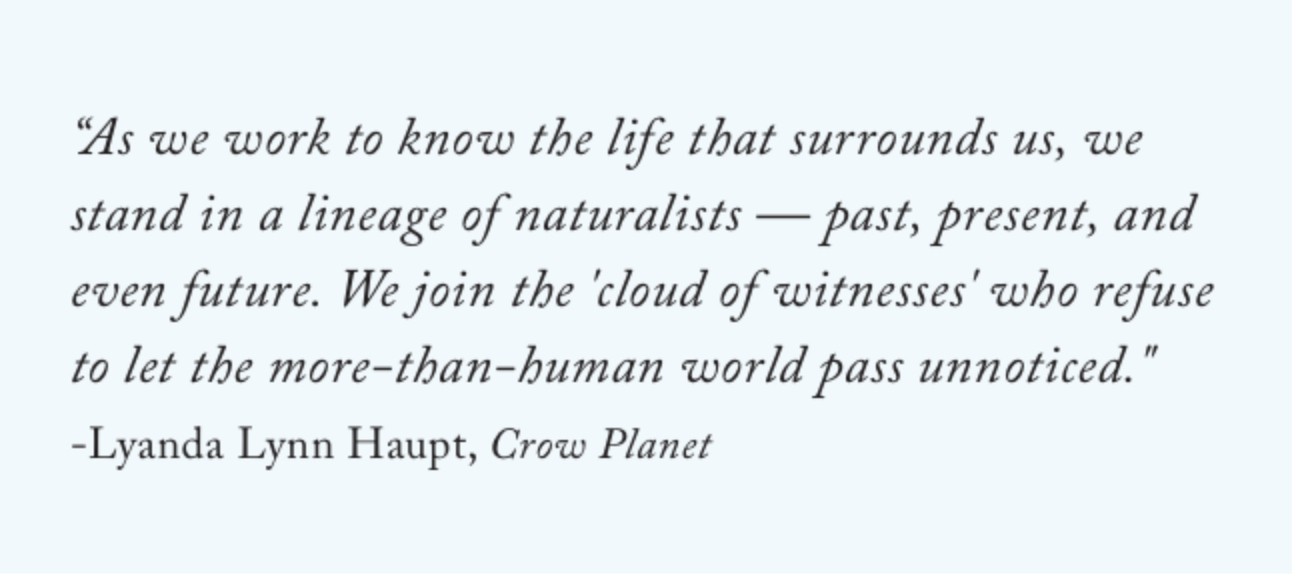Becoming a naturalist
By Bella Butler COMMUNITY AND ENVIRONMENT EDITOR
BOZEMAN – Southwest Montana’s tempestuous winter is giving way to a new season. As spring gracefully replaces snowfields with green meadows and trees gain their buds, the time of year symbolic of birth and renewal is marked by changes in the landscapes around us. With plenty of space to venture outside and observe the happenings of the active seasonal transition, anyone can be a naturalist.
According to Montana Outdoor Science School Master Naturalist Instructor Cedar Mathers-Winn, to become a naturalist all one needs to equip themselves with is interest, patience and time. While Mathers-Winn acknowledges that definitions vary, he said that he believes a naturalist is someone who spends time in the outdoors “observing nature, reflecting on those observations and developing questions based on their observations and reflection.” It is helpful, he added, to learn how to use resources like a dichotomous key and a field guide, but those skills come with time and rehearsal. Mathers-Winn suggested starting a nature journal as a good jumping off point.
“Go outside, and when something gets your attention, dig in,” he said. “Write and draw about what you see, hear and experience, and you’ll start to realize how much you don’t know. And therein lies the seed of naturalism.”
As the earth embraces change and a new beginning during this challenging period of pandemic, step into the role of a naturalist and take to the outdoors to interpret what’s going on around you.
Jump start your naturalist experience with these indicators of spring:
Birds
“Spring is an especially exciting time to be watching the birds in our area,” said Mathers-Winn. Birds from as far south as Argentina take to the sky to migrate north to breed. “Bluebirds, osprey, sparrows, sandhill cranes, warblers, tanagers, grosbeaks—all are moving northward to our state where they will put on their flashiest plumages, sing their finest songs and perform their elaborate displays, all with the single goal of reproduction,” he said. The same is true for stationary birds, he added, as they also join the mating game while defending their territory for newcomers. Employ your best listening and spotting skills as the new season inspires “intense performance and intense competition” for the feathered and winged sky dwellers.
Wildflowers
What better way to view the growth of a new season than by observing the colorful shoots that decorate the ground? This time of year marks the beginning of a multi-month rotating exhibit of wildflowers. Be sure to get out and see the season’s first round before they make room for summer flowers. Spring wildflowers mostly take on shades of pinks and purples, but a few exceptions exist. Glacier lilies, a tender yellow flower that is usually one of the first to pop up indicates where snow has recently melted. Others to look for during this time of year are pink sticky geraniums, arrowhead balsamroot, shooting stars and larkspur.
Weather
Spring weather patterns often take on a transitional nature as winter makes its grand exit and summer creeps in. Thunderstorms are common, and the occasional graupel or hail, a pellet-like snow, is also prone to fall. As snow melts from the surrounding high summits, rivers surge with swift waters and moisture is restored to wetlands. As the wetlands habitats are restored, new life returns to their soggy homes. After a heavy rain, venture outside to a marshy spot and look for frogs, snipes and insects.
Wildlife
As birthing season commences, baby animals are abounding throughout the wildlife-dense Greater Yellowstone Ecosystem. Look for bison and elk calves, fawns, big horn sheep lambs and other furry youngsters. The warming temperatures of spring also wake up the bears. Beginning with the emergence of grizzlies followed by black bears, remember to be bear aware!
Insects
For more detailed, small-scale observations, tune into the insects that fill the more minute spaces of spring. Fly fishermen and women are familiar with the riverside hatches that make for a feast for fish. Joining these swarms are pollinators, including bees and butterflies. “In the earliest stages of spring, the butterflies we see on the wing are those which spent the winter sheltered in some crevice of bark, loose bale of hay, or perhaps a brush pile in your yard,” Mathers-Winn said. “As the season progresses, butterflies will emerge from overwintering chrysalises. Those that spent the winter as caterpillars will begin their own transformations, and overwintered eggs will hatch to start the process from the beginning.” Keep an eye out for signs of this cycle and perhaps sketch any sightings in a journal.
The Montana Outdoor Science School is a Bozeman-based non-profit whose mission is to inspire curiosity, awareness and understanding of nature and science through quality educational experiences. MOSS offers spring and fall Master Naturalist courses which fill up quickly. To be notified of registration openings, visit outdoorscience.org/naturalist.

















